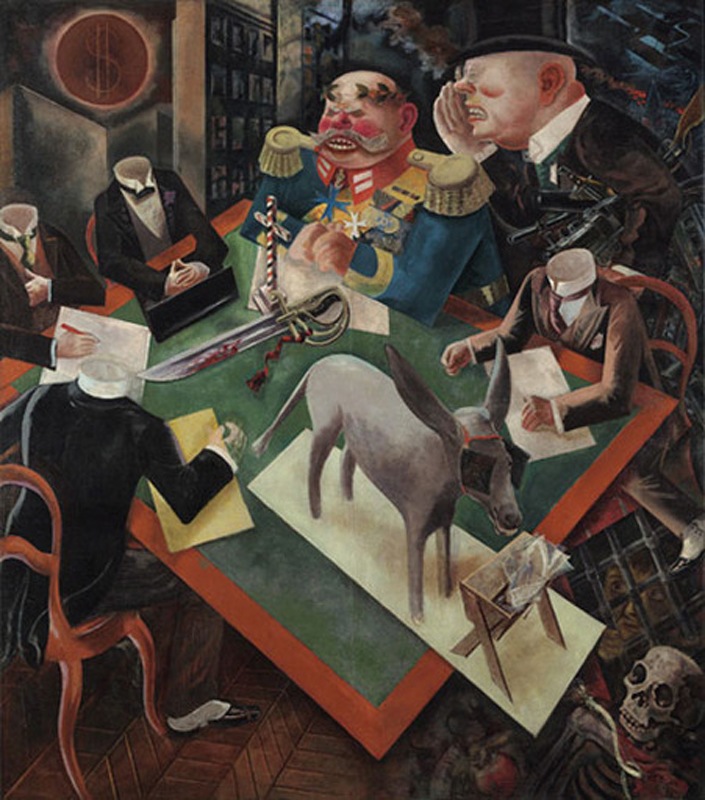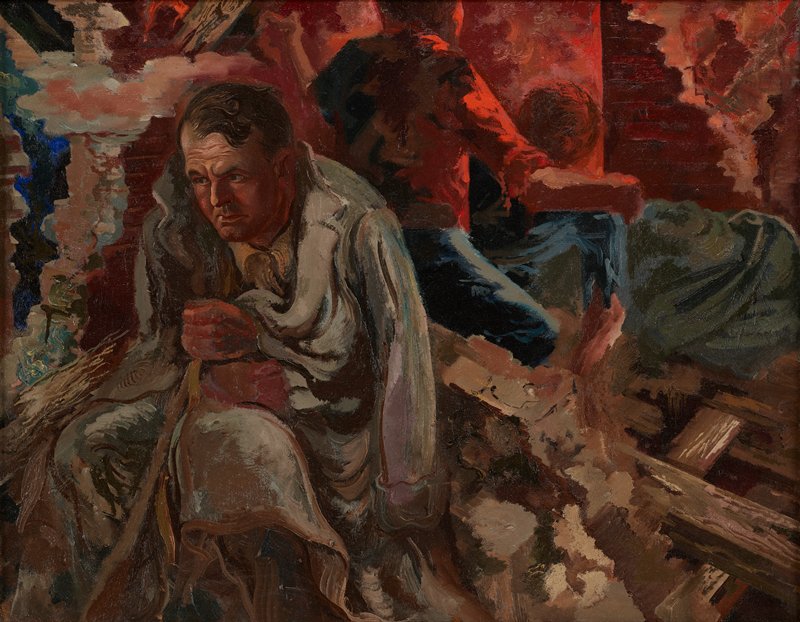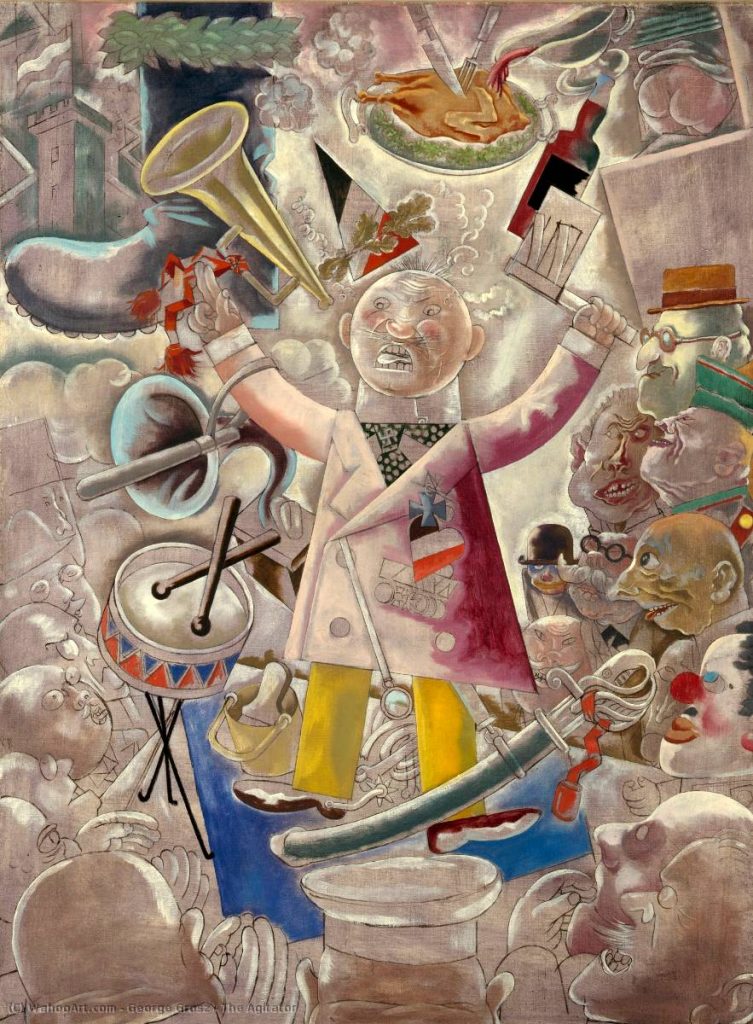George Grosz was a German New Objectivity and Dadaist artist born in Berlin on July 26th, 1893. He is best known for his criticism of society through caricatures and art with themes from his experiences during WWII. Grosz’s work depicted the greed of war by capitalists and the bourgeoisie through warped caricatures of military figures and other benefactors of war.
The way Grosz uses light and colour in his work gives each piece a dramatic and drastic feeling that exemplifies the grotesque and evil depictions of military and bourgeoisie in Grosz’s work. In Bonhams he depicts a man of the bourgeoisie who is maniacal in his facial expression and is seen chopping up meat for himself to eat while surrounded by skeletons of those who worked hard to give him the food he is greedily consuming. His work is poignant and represents the feelings of the proletariat during the German Depression. I think his work is important for understanding how the terrible conditions people lived in and how unfair the workers were treated and his work is an important part of history. I admire how he did not shy away from his subjects or themes, and he used different visual elements such as skewed perspective and caricature to get his message across.






connie,
Solid work on Chardin through to Grosz! Your interesting insights are unique and welcome. Well researched and pretty good writing. Keep it up only three more posts to go.
Jeff